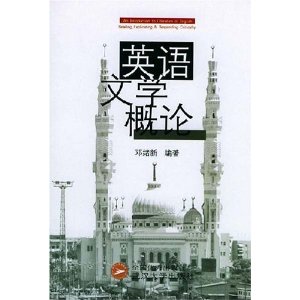圖書信息

平裝:423頁
開本:32開
ISBN:7307034964
條形碼:9787307034969
媒體推薦
Preface
Introduction to literature of English : Reading, Explicating,and Responding critically is a unique book Not only of selectedreadings, the book is also a comprehensive guide to explicating andresponding to literature. From my own experience of teaching litera-ture, I have found that almost everybody who studies literature ex-periences the same problem: how to explicate and respond to the
text. It is perfectly possible for students of English and of literatureto read a story or a poem over and over again and yet still to feel baf-fled and at loss as to what to say about it. One way of solving thisproblem, of course, is to go to the library, look it up in some refer-ence books and be ready to accept someone else's view of the text.But how much rewarding it would be if they could work out theirown critical response to any work they choose or are required to study.
The aim of this book is to help them develop their critical skills by offering a variety of original texts, explaining some basic ele-ments of literature, and providing some practical models and adviceto read, understand, analyze and respond to literature critically.The mastery of this skill can teach them never to take for granted; it can also develop within their critical skills, incisive thinking, and a sense of judgement. Learning the complexities expressed in the brief form of a poem, for instance, can teach them to look for the details
in simple things. Each chapter provides them with a major subjectclear method of study so that they can see how to set about tackling texts on their own. It also attempts to provide them with some broad ideas about the kind of texts they are likely to be study-ing and some ideas about how to think about literature. It then shows them how to apply these ideas in helping them construct their own analysis and interpretation.
The book is not an exhaustive one , and is not intended to the student a general coverage of major authors; rather, it is designedto expose them to the major literary genre--fiction, poetry and dra- ma-and to some masters of language. The usual topics and terms of literary scholarship are discussed, such as plot, character, point of view, figurative language, symbolism, irony, form and style, and so forth. In addition, the book also pays some attention to represen- tative, basic sub - genres (the sonnet and the tragedy, as exam- ples) in order better to understand the demands of artistic form. My hope is that although this book is, on the whole, intended to serve a practical purpose, it may also enrich their enjoyment of literature by making them more confident readers, alert to the interest and plea-sure to be derived from literary texts.
Xuxin Deng
2002. 1
目錄
Preface
Fiction
Chapter 1 Plot
Jakob Grimm and Wilhelm Grimm,Godfather Death
John Updike,A&P
Anton Chekhov,Misery
Chapter 2 point of View
Ernesr Hemingway,Cat in the Rain
Edgar Allan Poe,The Tell-Tale Heart
Chapter 3 Character and Characterization
Katherine Anne Porter,The Jilting of Granny Edith Whatrton,Roman Fever
Chapter 4 Setting
Kate Chopin,The Storm
Jhon Steinbeck,Chrysanthemums
Chapter 5 Tone and Style
Kate Chopin,The Story of an Hour
Ernest Hemingway,A Clean,Well-lighted Place
John collier,The Chaser
Chapter 6 Theme
William Carlos Williams,The Use of Force
Alice Walker,Everyday Use
Chapter 7 Symbol
Langston Hughes,On the Road
William Faulkner,A Rose for Emily
Eudora Welty,A Worn Path
Poetry
Chapter 8 Reading a Poem
Langston Hughes,Harlem
Robert Frost,“Out,Out——”
Li-young Lee,I Ask My Mother to Sing
Chapter 9 The Speaking Tone of Voice
Countee Cullen,For a Lady I Know
Mitsuye Yamada,To the Lady
Lyn Lifshin,My Mother and the Bed
Walter De La Mare,An epitaph
Chapter 10 Figures of Speech
……
Drama
Critical Approaches to Litcrature
Glossary of Literary Terms
